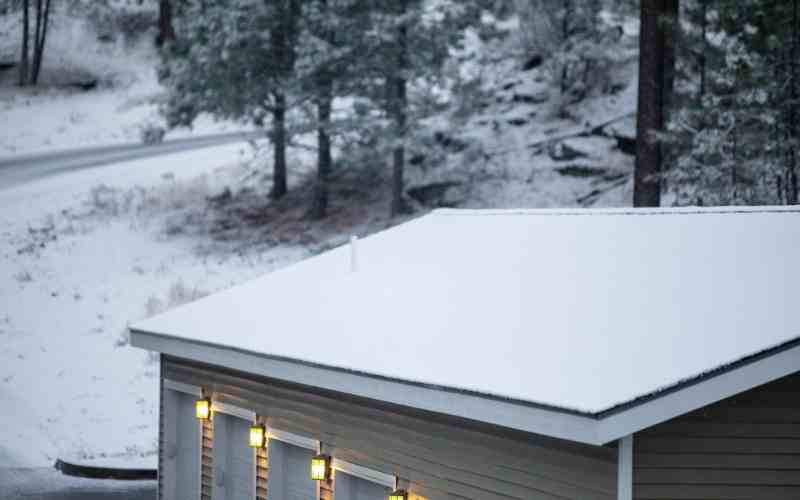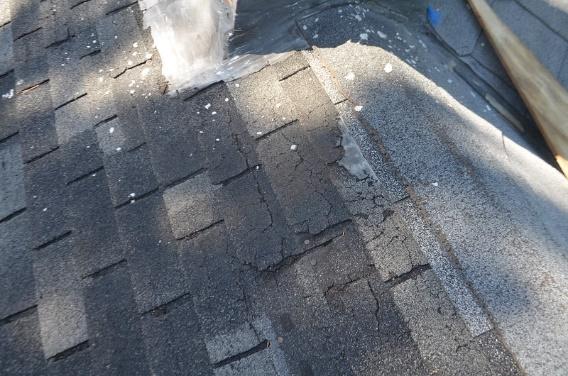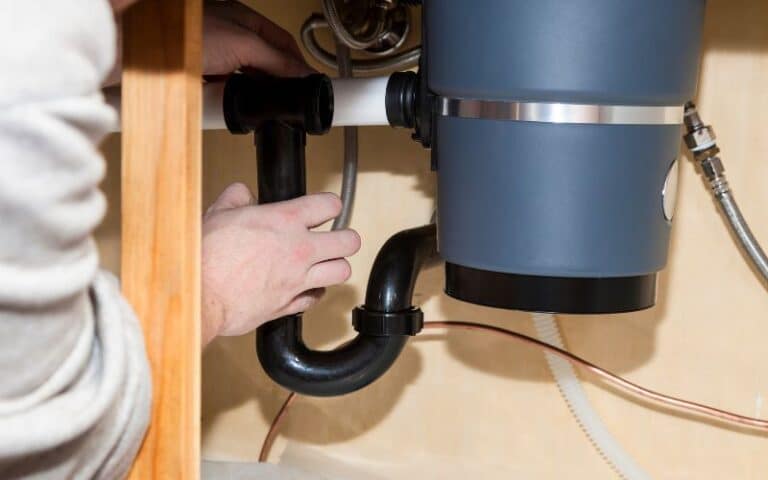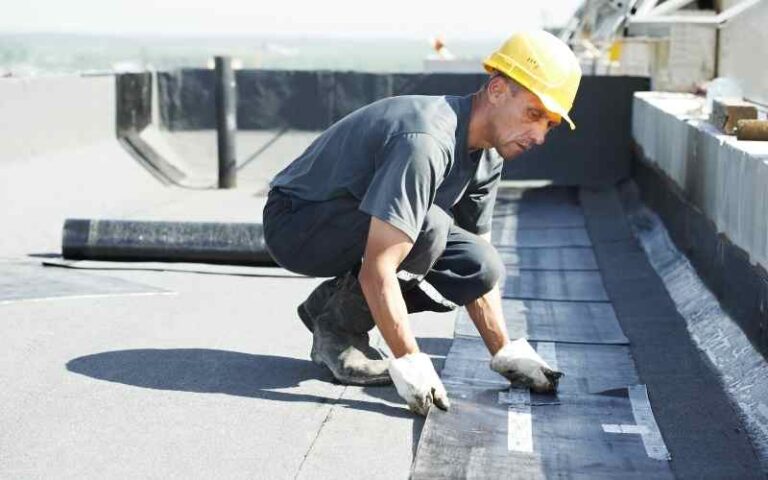Many people who live in snowy regions have attested to different winter experiences, some interesting, others not so cool. For instance, there have been reports of snow blowing into roof vents which is sadly common.
This circumstance comes with a series of adverse effects. So, many people have been wondering why this occurs and how to prevent it.
Snow blows into roof vents during the winter because of the high winds that throw it around. This phenomenon is pronounced in highly snowy regions and can affect you immensely if your roof vents are oversized. Nonetheless, while others admonish that you keep the size of your roof vents at a minimum, others advise that you close the vents during winter.
Ready for a Roofing Quiz?
Can Snow Get In Through Roof Vents?

Snow can easily get into your home through your roof vents. But this becomes easier when the winds blow at high speed or when your vent’s spaces are significant.
Many people living in snowy regions have complained about this occurrence. When the snow goes in through your roof vents, it tends to accumulate in your house’s attic.
This can result in new water spots on your ceiling, which is especially noticeable after a snowfall in heavy winds.
Ridge vents allow for a greater entrance of snow and allow snow to accumulate on your attic in these suitable snowy conditions.
The snow melts and damages your roof, even aiding the development of mold over time. However, mold growth in your roof is one thing you would love to avoid.
These ridge vents trace around the ridges of your roof; their function is to aid the removal of moist, warm air from the attic. Also, air enters your attic through these broken soffits, which helps push out the air in the attic.
The vents produce a chilling clean feeling by allowing the warm air to escape into the environment. However, these ridge vents are critical in the infiltration of snow into your roof during snowfalls.
Despite being designed to shield the space on the rooftop, there is still enough space for the entrance of snow in the presence of high winds.
So, while they work to beat down your attic’s temperature in the summer, they pose a danger in the winter.
In addition, the vents carry designs to keep out snow in everyday situations.
Nonetheless, adverse weather conditions tend to easily override this function, with wind-blown snow quickly making its way through and building up in the attic.
If snow makes its way through your roof vents, there would be obvious signs such as a wet ceiling. This is because the snow melts with time and flows into your ceiling material.
Ensure to inspect the attic access board of your home if you suspect this occurrence. On the one hand, the speed with which the snow melts depends on how well your home is insulated.
Should You Close Roof Vents In Winter?
Although covering your roof vents during the winter may seem like a great idea, it is not ever advisable to do so.
This is because closing your roof vents at any time puts your roof at risk, and for several reasons:
#1. Confined Warm Air
Covering your house’s roof vents during snowy conditions makes the air in the attic much warmer. You may think that this is an advantageous phenomenon; however, it isn’t always good because it places your roof in peril.
In normal circumstances, warm air dissipates from the ground level of your house and escapes through the roof vents. But this becomes impossible when you close the roof vents.
From here, the trapped warm air raises the temperature of your roof and melts the snow on top.
However, this melted snow freezes back on the borders close to the roof gutter, forming a barrage of ice. This ice barrage blocks the gutter, places an additional load on the roof, and causes the roof shingles to loosen.
So, it is always best to use alternative measures to prevent ice from entering your roof vents. Entirely closing the vents isn’t a great idea after all.
#2. Risks Of Moisture Presence
In closing your roof vents, you would inadvertently confine moisture in your attic. Although it may seem like this isn’t a problem at first, this promotes the growth of mold. Learn more about the vent problem.
And mold poses some health risks when it surpasses the threshold in an environment. In the end, if you aim to prevent snow from entering your attic, several efficient tips, such as using vents with tiny spaces, work perfectly.
On the other hand, if you aim to reduce the influx of cold air, you can use better insulation to stabilize the temperature. You can either use insulation boards or blown insulation for this purpose.
How Do I Protect My Roof Vents From Snow?
When installing roof vents, most people tend to focus on picking the main pipe and the additional components. However, a plan for protecting your vents from snow is one of the things you should not ignore.
So, you can achieve this by using a snow guard for your roof vents or using snow rakes to shove the snow if it accumulates.
#1. Install A Roof Vent Snow Guard
The usual snow guard for metallic roofs functions excellently with all roof components. Nonetheless, many roofing contractors still provide unique guards.
For instance, the snow diverter is affixed to the vent pipe to deal with the layer of snow.
The snow guard’s overall design helps push the snow to the sides of the roof vent, preventing it from going into the attic.
Usually, the snow guard comes in a rectangular shape, but other shapes are also available; your choice depends on your roof vent type.
The snow guard divides the mass of snow and ice into smaller parts before pushing them sideward. This is effective because it strongly prevents the snow from falling into the roof vents and causing damage.
Overall, this essential equipment halts a lot of damage and prevents repairs that should have been so expensive. Because of this, you do not have to fear water dropping on your ceiling or mold growing in your attic.
#2. Use A Roof Rake
This tool comes in handy when snow accumulates to an uncomfortable level on your roof. For example, if snow piles on your roof vent and blocks the opening, a roof rake is the next thing you should think of.
It is pretty easy to use and convenient. Roof rakes are always preferred to using chemicals and other substances to help melt ice or deal with snow.
In addition, these rakes do not just protect your roof vents, they are also valuable for clearing ice off your entire roof.
In the long run, roof rakes help avoid the problem of ice dam formation on your roof. So, it aids you in protecting your house’s attic and ceiling from getting soaked up after the snow melts.
Final Thoughts
Snow blowing into roof vents is a significant problem in highly snowy regions. This is one of the things that most homeowners try to avoid during the winter.
Nonetheless, it is never advisable to deal with your roof vents because of warm air’s adverse effects on your roof. So, affixing a snow guard to your roof vent is ideal.






